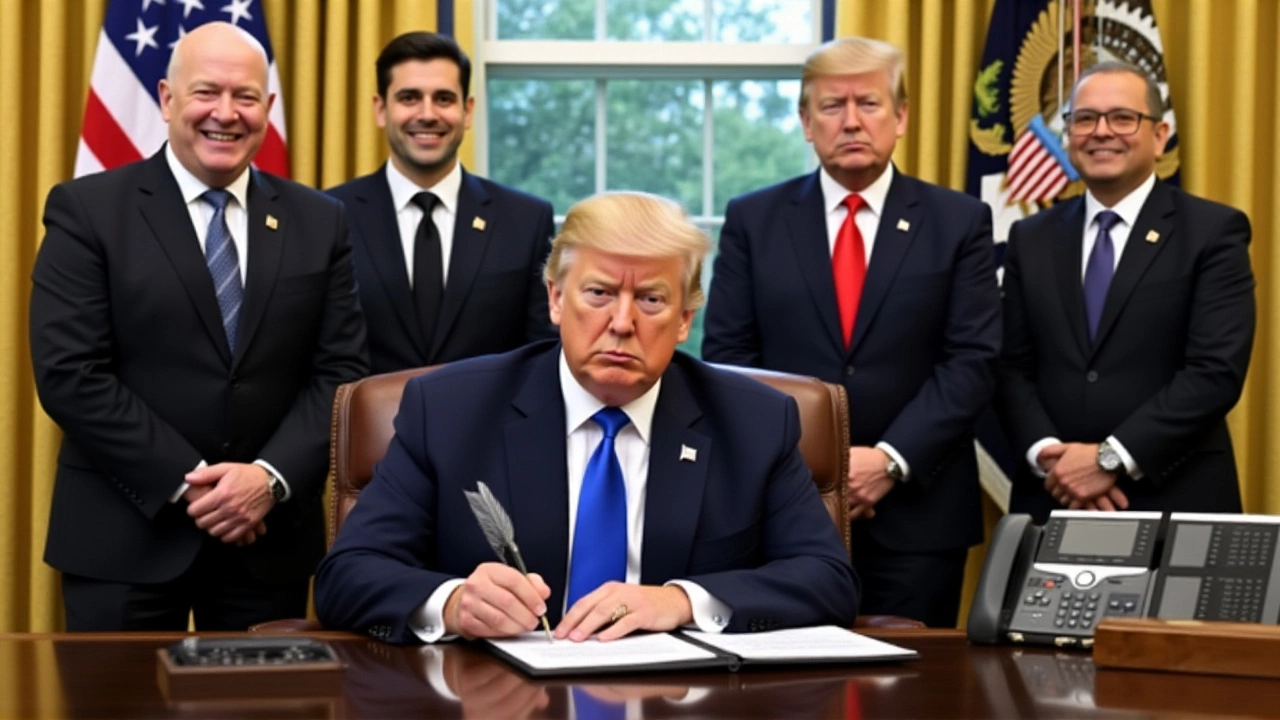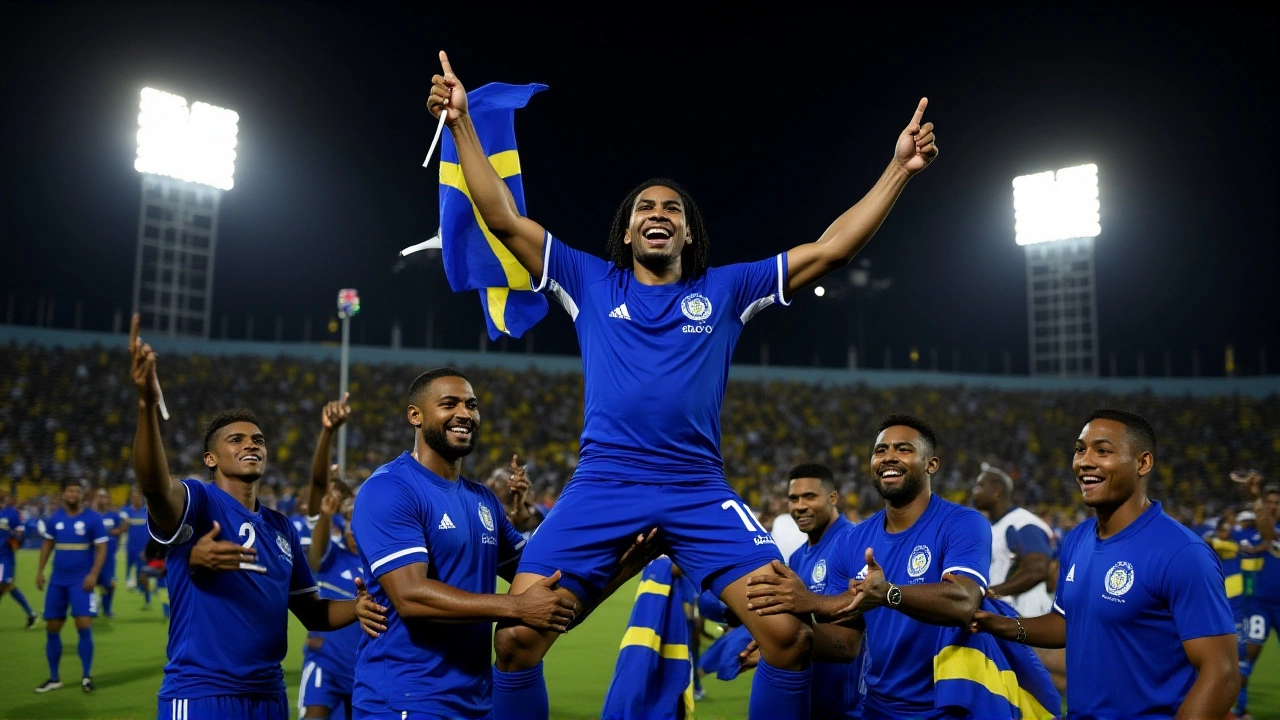It was a result that broke hearts in Willemstad and thrilled fans in Kingston: a 0-0 draw between the Curacao national football team and the Jamaica national football team on November 19, 2025, that ended Curacao’s dream of playing in the 2026 FIFA World Cup. No goals. No glory. Just silence in the stands of the Ergilio Hato Stadium, followed by the slow, heavy realization that after years of building, this was it. They didn’t lose. They just didn’t win. And in World Cup qualifying, that’s the same as going home.
One Point, One Dream, Gone
The match wasn’t pretty. No flashy goals, no last-minute heroics. Just two teams locked in a tense, physical battle under the Caribbean sun, each knowing the stakes. Curacao needed a win to leapfrog Jamaica in the CONCACAF qualifying group. A draw? That would leave them in third place, out of the automatic spots and—crucially—out of the playoff picture. And that’s exactly what happened. The final whistle blew at 2:17 PM local time. No celebration. No tears. Just a quiet walk off the pitch. The Curacao Football Union had invested heavily in youth academies and overseas-based talent over the past decade. Players like Renato Vugt and Shanique van der Merwe had returned from Dutch and Belgian clubs to lead the charge. But in the end, it wasn’t enough. The Reggae Boyz held firm. And Curacao’s campaign ended with 11 points from 10 matches—the same as Jamaica, but behind on goal difference.The Play-Off Draw That Didn’t Include Them
Two days later, on November 21, 2025, the FIFA Play-Off Tournament Zurich came to life inside FIFA’s headquarters. Six teams were drawn into three two-legged ties. The winners would earn the final two spots in the 48-team 2026 FIFA World Cup. But Curacao wasn’t there. Not even on the list. Their elimination was confirmed before the draw even began. The six hopefuls included teams from Africa, Asia, Oceania, and South America—but not the Caribbean island with a population of just 160,000. The fact that a Kuwaiti energy company like Petrochemical Holding Company felt compelled to report the result speaks volumes. This wasn’t just a football result. It was a global moment.Why This Matters Beyond the Pitch
Curacao has never qualified for a World Cup. Not once. In 2014, they came within a single goal of reaching the final qualifying round. In 2018, they lost on away goals. Now, in 2026, they were so close—so, so close—that the draw felt cruel. The team had beaten the United States 2-1 in a friendly last year. They’d drawn with Mexico in a competitive match. They’d held Canada to a 1-1 tie in Toronto. This wasn’t a minnow. This was a team with belief. And belief, in football, is often more valuable than budget or pedigree.The FIFA expansion to 48 teams was supposed to give smaller nations a real shot. And for a moment, it looked like Curacao might be the first tiny nation to break through. Instead, they became the biggest “what if” of the cycle. The Reggae Boyz, meanwhile, advanced to the playoffs—where they’ll face either Saudi Arabia or Uzbekistan in March. Jamaica’s journey continues. Curacao’s? Over.

What’s Next for Curacao Football?
The Curacao Football Union has already signaled it won’t give up. President Winston Gerschtanowitz told local media: “We didn’t fail. We just didn’t get the result we needed. The foundation is there. The kids are coming up. We’ll be back.” The youth academy in Piscadera is already producing a new generation of midfielders with technical flair. One 16-year-old, Joshua de Jong, scored six goals in the U-17 CONCACAF qualifiers last month. He’s being scouted by Ajax and PSV. If Curacao can develop even one player like him into a star, the next qualifying campaign might look very different.The 2030 World Cup will be hosted across three continents—Morocco, Spain, and Portugal—with a special slot reserved for a historic African nation. But for Curacao, the next target is simpler: qualify for the 2027 CONCACAF Gold Cup. Win that, and you get a shot at the 2028 FIFA Futsal World Cup. And maybe, just maybe, the 2030 qualifiers will feel less like a dream and more like a destiny.
The Bigger Picture
The 2026 FIFA World Cup will be the first with 48 teams. That’s 16 more than 2022. But even with more spots, the path is narrower for teams like Curacao. The top two in each CONCACAF group go straight through. The third-place teams enter a playoff, but only four of them make it. That means one team gets left out. This time, it was Curacao. And the margin? One goal difference. One missed penalty in the 89th minute against Trinidad and Tobago back in September. One moment. One decision. One draw.Frequently Asked Questions
Why didn’t Curacao qualify even though they drew with Jamaica?
Curacao finished third in their CONCACAF qualifying group with 11 points, tied with Jamaica—but behind on goal difference. Jamaica had scored two more goals across the group stage, which gave them the edge. In World Cup qualifying, goal difference is the first tiebreaker after points. A draw wasn’t enough; they needed a win.
Could Curacao have still made it through the playoffs?
No. Only the top two teams in each CONCACAF group qualified automatically. The third-place teams entered a playoff, but only the top four third-place finishers across all groups advanced. Curacao finished fifth among third-place teams, meaning they were eliminated before the playoff draw even happened.
What role did the FIFA Play-Off Tournament draw in Zurich play?
The draw on November 21, 2025, determined the matchups for the six teams still eligible for the final two World Cup spots. Curacao wasn’t among them. Their elimination was confirmed before the draw, meaning they had no path left. The six teams included one each from AFC, CAF, CONMEBOL, OFC, and two from CONCACAF—none of which were Curacao.
Is Curacao the smallest nation to ever try to qualify for the World Cup?
Yes, by population. With around 160,000 people, Curacao is smaller than any nation that has ever reached a World Cup finals. San Marino (34,000) has tried but never come close. Curacao’s 2026 campaign was their best ever, making them the smallest nation to ever have a realistic shot at qualifying.
Who are the key players in Curacao’s next generation?
Sixteen-year-old midfielder Joshua de Jong, who scored six goals in the U-17 CONCACAF qualifiers, is already attracting interest from Dutch clubs like Ajax and PSV. Defender Jaden van der Meer, 18, plays for Sparta Rotterdam’s youth squad. Both are seen as the future pillars of Curacao’s next qualifying push for 2030.
How did a Kuwaiti energy company end up reporting this football news?
Petrochemical Holding Company (PHC) used its corporate news portal to publish a one-off update on the match as part of a broader effort to engage global audiences. While PHC primarily reports on dividends and oil markets, the story’s emotional weight and international reach made it newsworthy enough to feature—showing how deeply the World Cup resonates beyond sports.
